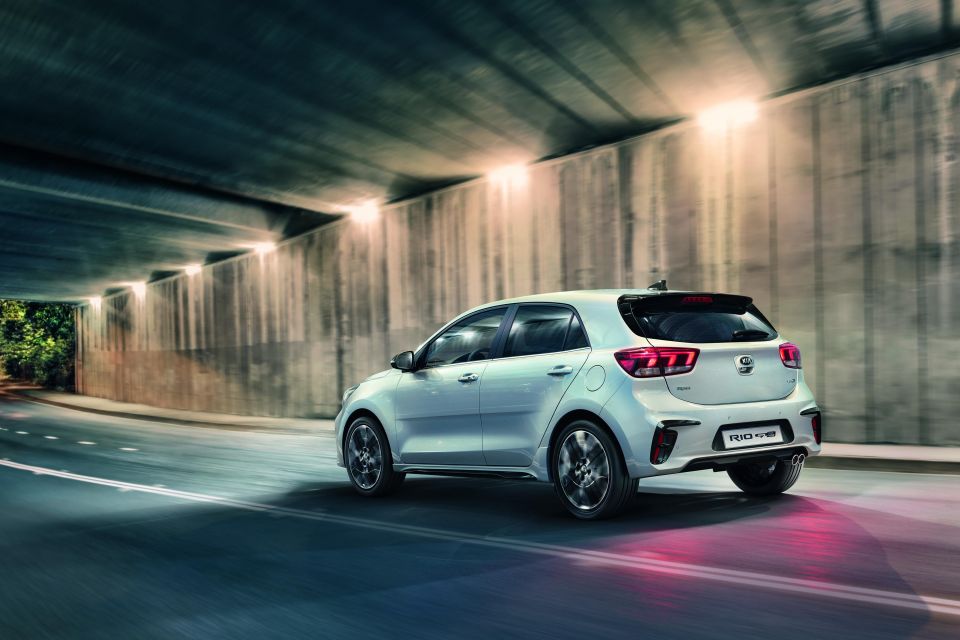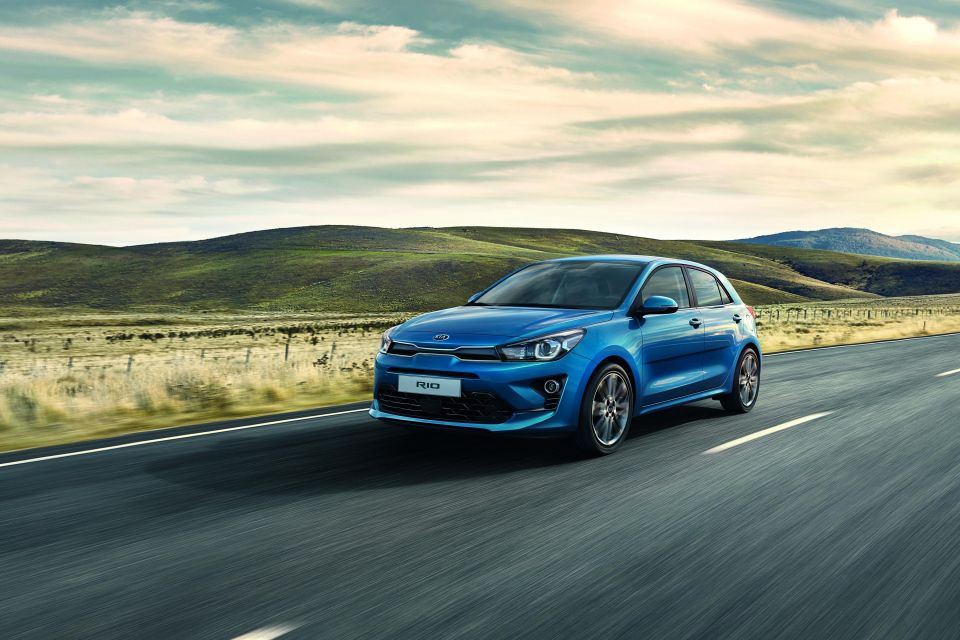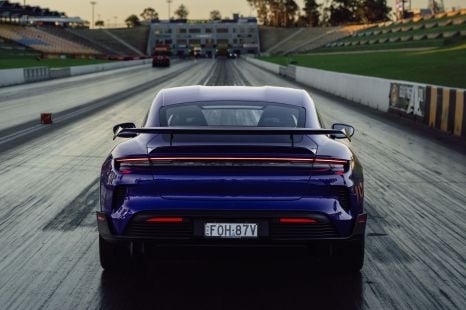

James Wong
2026 Porsche Macan review: Long-term introduction
3 Hours Ago

Marketplace Editor
Kia is getting ready to give the city-sized Rio hatchback a safety boost.
The 2021 Rio has been revealed in Europe and detailed for the Australian market, with sales to commence in July.
Headlining changes for the Australian model include a comprehensive upgrade to the infotainment and driver assistance technologies across the range – but not all the changes available overseas will be offered locally.


A larger 8.0-inch touchscreen infotainment unit with wireless Android Auto and Apple CarPlay is now fitted as standard in Australia, with Sport and GT-Line models also benefitting from a new 4.2-inch colour display in the gauge cluster.
The GT-Line exclusively picks up climate control, an automatic defog function that operates whenever the climate control system is on.
As for safety tech, autonomous emergency braking is now standard on the Sport, having previously been limited to the GT-Line. For both mid- and high-spec Rio models, the AEB system senses vehicles, pedestrians, and cyclists.
The Sport also gains the GT-Line variant’s forward collision warning and lane-keep assist, driver attention alert, and high-beam assist. The adaptive cruise control with lane-following assist features offered in Europe won’t make the cut, however.


Under the skin, an optional six-speed automatic is now available for the entry-level 74kW/133Nm 1.4 ‘MPI’ naturally-aspirated engine used in SandSport grades, replacing the outgoing S model’s ageing four-speed option.
The 1.0-litre ‘T-GDI’ turbocharged three-cylinder in the GT-Line, meanwhile, has been detuned to 74kW (from 88kW), though retains its 172Nm torque output.
In Europe the higher tune of the 1.0-litre turbo is now only available with more expensive mild-hybrid technology, likely why the 88kW version will no longer be offered in Australian showrooms. The GT-Line also retains its standard seven-speed dual-clutch automatic driving the front wheels.


Rounding out the changes for Australia are subtle exterior design changes including a slimmer front grille, wider front bumper, and new fog-light surrounds. Australia also misses out on the full-LED headlights now standard on European models.
Sport and GT-Line models pick up a new Perennial Grey colour option, while the GT-Line will exclusively offer a new Sporty Blue exterior paint (pictured on the overseas model).
“For many of our customers a Rio would have been their first experience with a Kia,” said Kia Australia CEO, Damien Meredith.
“Over the best part of two decades the Rio has won a well-earned reputation for comfort, safety, reliability and outstanding value. The improvements to the fourth generation will only enhance that reputation for not only the Rio, but the wider Kia family.”
Pricing and specification details will be revealed closer to the Rio’s July arrival.

For the European model, the headlining act is the new MHEV – dubbed EcoDynamics+ in Kia-speak.
The powertrain features a version of the company’s revised 1.0-litre ‘T-GDi’ turbocharged three-cylinder petrol which has been upgraded to more efficient ‘SmartStream’ status teamed with a 48V mild-hybrid system which contributes electric torque assistance and recuperates energy via regenerative braking.
The ‘Mild-Hybrid Starter-Generator’ (MHSG) unit is a belt-driven system connected to engine’s crankshaft, and constantly switches between ‘motor’ and ‘generator’ modes.
Under acceleration the MHSG assists the petrol engine to reduce load and emissions, while it collects energy from the crankshaft when decelerating to charge the 48V lithium-ion polymer battery.
Kia says the new electrified engine option delivers enhanced efficiency compared to the non-MHEV version.

The 1.0-litre engine features Continuously Variable Valve Duration (CVVD) technology which enables the unit to switch between different combustion cycles depending on load to maximise efficiency.
In 120PS (88kW) trim, the mild-hybrid Rio gets 16 per cent more torque than the previous model’s 1.0-litre ‘Kappa’ turbo triple, with 200Nm. The EcoDynamics+ engine will also be offered in Europe with a 100PS (73kW) tune.
Kia claims the new MHEV variant reduces the Rio’s CO2 emissions by between 8.1 and 10.7 per cent.
The new mild-hybrid engine will also debut Kia’s new intelligent manual transmission (iMT) which features a clutch-by-wire system.
Developed to further enhance efficiency, the iMT features an electronically-controlled clutch which integrates with the MHSG to switch off the engine earlier when coasting to a stop.
Efficiency and performance figures for the new Rio mild-hybrids will be revealed closer to the third-quarter European market launch.

Beyond the MHEV versions, the Kia Rio also benefits from upgraded combustion-only engines which wear the company’s ‘SmartStream’ efficiency-optimised branding.
The 1.0-litre three-cylinder turbo can be had sans electrification, like in Australia, though is only available in 100PS (74kW) form.
Offered with a new six-speed manual (formerly five-speed) and seven-speed dual-clutch automatic, the upgraded turbo petrol motor gets a revised idle stop/start system in manual models which turns off the engine when the brake and clutch pedal are depressed to save fuel as the vehicle comes to a stop. Previously, the system was exclusively linked to the clutch.
The 1.2-litre naturally-aspirated petrol engine offered overseas has also been upgraded to ‘SmartStream’ status and develops 84PS (62kW).
Like the mild-hybrid, full details for these new engines will be revealed closer to market launch.

The Euro-market version gets the same 8.0-inch touchscreen upgrade unit on offer, though it’s available with the company’s ‘UVO ‘Phase II’ online services.
Not available in Australia, the UVO system now allows for extended online functions like weather forecasts, points of interest, fuel prices, and parking information to supplement the existing real-time traffic information service.
The technology also offers remote functions via compatible Android and Apple smartphones, including the ability to send navigation routes to the vehicle before a journey, vehicle locator, and access vehicle reports and diagnostics.
A range of new driver assistance features will be available for the first time on the Euro-market Rio, which should put it in contention with class leaders in the region.
The existing autonomous emergency braking system with pedestrian detection now gets cyclist recognition, as per the local model. Also new are blind-spot assist, rear cross-traffic assist, rear occupant alert, intelligent speed limit warning, adaptive cruise control, and lane following assist.

Key upgrades are the latter two features, which essentially allow for Level 2 autonomous driving ability. Lane following assist works with the new adaptive cruise system to control acceleration, braking and steering at speeds up to 180km/h. Camera and radar sensors keep a safe distance from the vehicle in front, as well as monitoring road markings to keep the Rio in the centre of its lane.
Rounding out the assistance suite is a new ‘Leading Vehicle Departure Alert‘, which notifies the driver when the car in front sets off to “avoid the potential embarrassment of other impatient road users ‘reminding’ the driver to move off instead”. This feature also isn’t mentioned in the Australian upgrades.
In addition to the new exterior colours, a new blue colour pack is available for select European markets, adding coloured seat bolsters, dashboard trim and door armrests, matched with contrast stitching.
Finally, the driver and front passenger now get the option of seat height adjustability in the European market.
Stay tuned to CarExpert for all the latest in the lead-up to the new Rio’s Australian arrival in July.
Where expert car reviews meet expert car buying – CarExpert gives you trusted advice, personalised service and real savings on your next new car.
James Wong is an automotive journalist and former PR consultant, recognised among Australia’s most prolific motoring writers.


James Wong
3 Hours Ago


Toby Hagon
10 Hours Ago


William Stopford
11 Hours Ago


William Stopford
12 Hours Ago


James Wong
14 Hours Ago


Damion Smy
15 Hours Ago